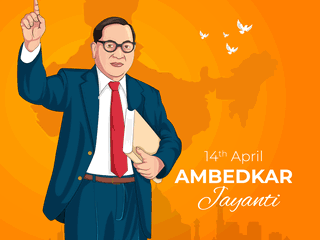- Calendar
- Calendar 2025
- July
- Van Mahotsav
Van Mahotsav
Van Mahotsav, also known as the Forest Festival, is a week-long tree-planting event celebrated across India from July 1 to July 7 each year.
Coinciding with the monsoon season, this period provides the perfect climate for newly planted trees to take root and flourish.
The festival encourages active participation from communities, schools, and organizations, fostering environmental awareness through tree-planting drives and conservation programs.
Van Mahotsav, deeply etched in Indian culture plays a crucial role in reminding us of our responsibility to protect and nurture our motherland for the upcoming generations.
The History of Van Mahotsav
Mohinder Singh Randhawa organized India's first ever tree-planting festival from July 20 to July 27 in 1947.
He adopted the concept from similar events in other countries like forest weeks, arbor days, etc.
The then commissioner of Delhi, Khurshid Ahmad Khan, inaugurated the event by planting Bauhinia saplings in the morning.
Later that day, another ceremony took place at Purana Qila, led by Jawaharlal Nehru, who was the Vice President of the Interim Government.
One special day was called “Ladies Day,” where women, including Lady Mountbatten, planted trees at Qutub Minar.
Nehru expressed his surprise that India had not paid much attention to tree planting before.
He pointed out that cutting down trees without replanting had turned large areas into deserts. He even suggested a law requiring people to plant a new tree before cutting one.
Mahatma Gandhi, who was in Delhi at the time, also spoke about the importance of tree planting in his prayer speech.
He pointed out that the initiative wasn’t just for wealthy people, it was meant to inspire everyone.
He explained that deforestation led to less rainfall and that trees required little care after their early growth stages.
He also noted that fruit trees could produce more food than crops like wheat on the same land.
The tradition continued, and in 1950, the Minister of Food and Agriculture, Kanaiyalal Maneklal Munshi, officially turned it into a national event.
He moved it to the first week of July and gave it a new name, Van Mahotsav.
In 1950, the initiative was officially recognized as “Van Mahotsav” by Kanaiyalal Maneklal Munshi, the then Union Minister for Agriculture and Food.
The festival was moved to the first week of July to align with the monsoon season, ensuring higher survival rates for saplings.
The Significance of Van Mahotsav
- Raises awareness about deforestation, biodiversity conservation, and ecological balance.
- Encourages large-scale tree plantations to increase green cover in India.
- Helps mitigate climate change by absorbing carbon dioxide and reducing global warming.
- Prevents soil erosion by stabilizing the ground with tree roots.
- Supports biodiversity by providing habitats for various plant and animal species.
- Improves air quality by absorbing pollutants and releasing oxygen.
- Contributes to livelihoods by providing timber, fuel, and food resources for forest-dependent communities.
Celebrations of Van Mahotsav
Van Mahotsav is celebrated with great gusto all over the country that brings unites people of all religions together to raise awareness about the conservation of trees.
Several activities are organized across the nation to encourage afforestation and sustainable environmental practices.
The major highlight is obviously the tree plantation drive, with educational institutions, NGOs, and government bodies distributing and planting saplings in different areas.
Educational institutions host workshops and seminars to educate people about afforestation and sustainability, while community participation plays a key role, as citizens actively engage in planting trees in public spaces, parks, and along roadsides.
Art and cultural exhibitions also form an integral part of the celebrations, featuring nature-themed paintings, floral designs, and eco-friendly crafts that highlight the beauty of forests.
Rallies and awareness campaigns, led by environmental activists and students, emphasize the significance of trees and their role in maintaining ecological balance.
Schools and colleges contribute by organizing competitions such as essay writing, poster-making, and debates, encouraging young minds to explore environmental issues and solutions.
Participating in Van Mahotsav is simple yet impactful, and there are many ways individuals can contribute.
Planting a tree, especially a native species suited to the local environment, is a direct and effective way to support afforestation.
Adopting sustainable practices such as reducing waste, reusing materials, and recycling helps minimize environmental impact
Spreading awareness about the importance of trees and conservation efforts within one’s community can inspire collective action.

Other Celebrations
-
Apr 15 Tue
-
Sep 01 Mon
-
Oct 01 Wed
-
Nov 05 Wed

Van Mahotsav - Next years
Wednesday, 01 July 2026
Thursday, 01 July 2027
Saturday, 01 July 2028











